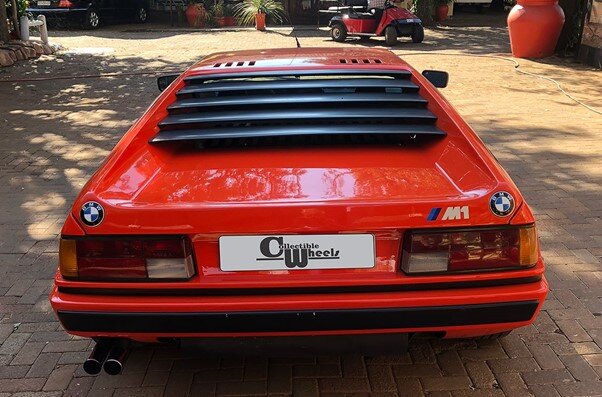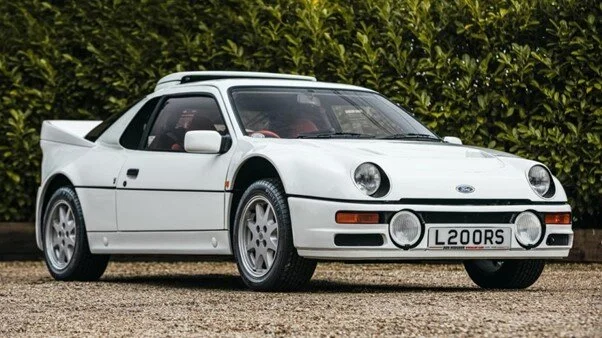Mass production of glass strands was accidentally discovered in 1932 when Games Slayter, a researcher at Owens-Illinois, directed a jet of compressed air at a stream of molten glass and produced fibres. A patent for this method of producing glass wool was first applied for in 1933Owens joined with the Corning company in 1935 and the method was adapted by Owens Corning to produce its patented "Fiberglas"
The first car to have a fibre-glass body was a 1946 prototype of the Stout Scarab but the model did not enter production.
1946 Stout Scarab
The fibreglass car body boom quickly became the material of choice for countless low-volume car makers such as Lotus, Alpine, TVR, Matra, Ginetta and a few more. Some larger mainstream manufacturers were also quick to recognise the benefits of fiberglass, with Kaiser and Chevrolet revealing fibreglass-bodied prototypes as early as 1952 in the USA, with Saab and Volvo presenting niche fibreglass-bodied sports cars too soon after.
C1 Assembly Line
Today Fibreglass remains the favoured building material for many specialist cars, even if it has now fallen from favour with more mainstream mass-market manufacturers due the subsequent development of alternative hi-tech composites like Kevlar and carbon-fibre. Here are our favourite fibre glass bodied cars produced by mainstream makers better known for using more traditional materials…
Chevrolet Corvette C1 – 1953-62
Chevrolet rushed the Corvette into production following the model's debut at GM's 1953 Motorama show. The first 300 Corvettes were to a large degree, hand-built on a makeshift assembly line that was installed in an old truck plant in Flint Michigan while a factory was being prepped for a full-scale 1954 production run. The outer body was made out of then-revolutionary glass fibre reinforced plastic material. Although steel shortages or quotas are sometimes mentioned as a factor in the decision to use fiberglass, no evidence exists to support this.
The Corvette was produced using conventional fibreglass construction methods until the third generation C3 in 1968, when a press-mould process was introduced to simplify and decrease the GRP’s production time, this advance leading to the development of SMC (sheet moulded compound), used for all 1973-2004 Corvette body panels. Post-2004, Corvettes have continued to use SMC, but with a higher carbon-fibre content for strength and weight advantages.
Corvette C1
BMW M1 – 1978-81
In the late 1970s, the German automaker developed one of the more interesting mid-engine performance cars of all time. Born out of a desire to replace the aging 3.0 CSL race cars that BMW's then-newly founded Motorsports division campaigned around the world. BMW had to build 400 road cars to homologate it for racing.
The Italian Design-styled (and built) M1 used riveted fibre glass panels, attached to a lightweight but rigid steel spaceframe chassis .Lamborghini was hired to develop the space frame chassis, Gianpaolo Dallara (a former Lamborghini employee)designed the suspension and Giorgetto Giugiaro who had recently founded Ital Design, was responsible for styling the car's wedge-like fiberglass body. German firm Baur oversaw final assembly in Stuttgart.
BMW M1
A decade after the M1, BMW went on to launch its second plastic car; the Z1 roadster, which featured removable GE’s Xenoy thermoplastic bodywork for the side panels and unusual retractable doors, with a fibre glass bonnet, boot, and tonneau cover.
BMW M1
Ford RS200 – 1985-86
The Ford RS200, a fibreglass-bodied homologation special developed to compete with Peugeot, Lancia, and MG in Group B rallying, but killed off before the model had chance to really prove itself.
Ford’s first (and only) rally of the 1986 season saw an RS200 involved in a tragic incident that took three spectators lives on the Rally de Portugal. This Portuguese accident was one of many that signalled Group B as simply too fast and dangerous, the Formula being outlawed at the end of 1986.
Ford RS200 Group B Rally Car
Due to Group B’s cancellation, the RS200’s competition career was very short lived, causing some RS200 buyers to refuse delivery of the cars. As a result, Ford never made the full 200 quota of Reliant-built road-going RS200s required to comply with homologation regulations, with reportedly 158 examples made between October 1985 and January 1986.
The RS200’s fibre glass s body was styled by Ghia and assembled around a honeycombed aluminium, steel and carbon-fibre central chassis, into which a Cosworth-developed 1.8-litre turbocharged four-cylinder motor was centrally-mounted.
The bodywork of most of the RS200’s mid-engine Ford GT40 and GT70 competition predecessors were also made of fibreglass.
Ford RS2000
Ferrari 308 GTB ‘Vetroresina’ – 1975-77
Introduced at the Paris Salon in 1975, the stunningly beautiful 308 GTB – Ferrari's second V8-engined road car - marked a welcome return to Pininfarina styling following the Bertone-designed Dino 308 GT4. Badged as a 'proper' Ferrari rather than a Dino.
Produced initially with glass fibre (vetroresina) bodywork - the first time this material had been used for a production Ferrari - the Scaglietti-built 308 GTB used steel after April 1977.
Ferrari’s ripple-free fibre glass was of a high-quality standard, but in contrast to steel and alloy, it felt down market and deterred some customers with complaints of squeaks and creaks. Fibre glass 308s offered key benefits too though, being immune to rust – unlike later non-galvanised pre-1983 models – with a useful 150kg weight saving, a dry-sump lubrication system producing around 10PS more than steel-bodied GTBs, plus scarcity.
Only 712 vetroesina 308 GTB coupés were produced
Daimler SP250 ‘Dart’ – 1959-64
The English firm of Daimler (no relation to Mercedes-Benz) was known as a quality builder of stodgy limousines and hearses, particularly for the Royal Family, until the 1950s. At the time, the US market was queuing to purchase Jaguar’s, MG’s, Triumph’s, and Austin-Healey’s. Daimler jumped in with an advanced, if flawed, offering of their own. They hired Triumph motorcycle designer Edward Turner, who came up with one of the best sports car motors ever, a 2.5-litre Hemi V-8.
Daimler shocked all by unveiling a daring fibreglass bodied V8 sports car at the 1959 New York Show.
Early cars had bodywork issues; the fibreglass flexed alarmingly on the TR-3-style frame, so that doors would pop open during corners. The brakes were excellent and the engine even better, but the steering was a terribly slow.
Redesignated SP250 when production began Daimler SP250 Darts are rare these days with only about 1,000 survivors.
Daimler SP250 Dart
Volvo P1900 – 1956-57
In 1953 Volvo’s co-founder and managing director Assar Gabrielsson visited the U.S. and was very taken with the new fiberglass-bodied Chevrolet Corvette. He talked with Bill Tritt, who ran Glasspar, the company that made fiberglass boats and car bodies, and Tritt made some sketches of a two-seater roadster. Volvo sent a new chassis to Glasspar in Costa Mesa, California, and Tritt built a car around it.
After a handful of prototypes, the P1900 Sport went into production in 1956. Glasspar built 18 of the new roadsters and shipped the bodies to Sweden, where Volvo assembled the cars.
How the Volvo P1900 might have fared in the U.S. market became a moot point when Gabrielsson’s successor at Volvo, Gunnar Engelau borrowed one for the weekend. He was reportedly appalled by the lack of rigidity and quality control and famously said “I thought the doors would fall off.” Monday morning, he cancelled the project, and there would not be another Volvo sports car until the P1800 of 1960, which would be made of steel.
In total only 68 were produced with 18 of them exported to the USA the balance was all sold in Sweden.
Volvo P1900
BMC Mini – 1969
BMC Mini gathering in Chilie
Strong global demand saw BMC commence worldwide Mini production in the 1960s, the innovative car adapted to local market needs, from Italy to Australia.
The small South American market of Chile wanted the Mini but imported cars were banned. BMC could not justify the tooling and equipment needed for Chile to produce steel bodies, so it turned to experienced Isle of Man fibre glass specialists Peel Industries (of P50 microcar fame) to develop a fibreglass Mini (plus a BMC ‘ADO16’ 1100) bodyshell, with local production beginning in 1969. Another South American country, Venezuela, later revived the fibre glass Mini in 1992, sold as the Cord, and building 768 examples.
BMC Mini 1969
BMW Mini 1992














